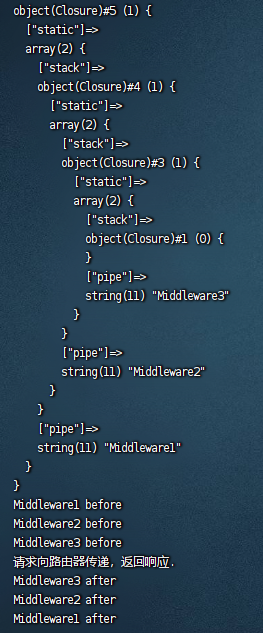1
2
3
4
5
6
7
8
9
10
11
12
13
14
15
16
17
18
19
20
21
22
23
24
25
26
27
28
29
30
31
32
33
34
35
36
37
38
39
40
41
42
43
44
45
46
47
48
49
50
51
52
53
54
55
56
57
58
59
60
61
62
63
64
65
66
67
68
69
70
71
72
73
74
75
76
77
78
79
80
81
82
83
84
85
86
87
88
89
90
91
92
93
94
95
96
97
98
99
100
101
102
103
104
105
106
107
108
109
110
111
112
113
114
115
116
117
118
119
120
121
122
123
124
125
126
127
128
129
130
131
132
133
134
135
136
137
138
139
140
141
142
143
144
145
146
147
148
149
150
151
152
153
154
155
156
157
158
159
160
161
162
163
164
165
166
167
168
169
170
171
172
173
174
175
176
177
178
179
180
181
182
183
184
185
186
187
188
189
190
191
192
| import sys
import jwt
from pydantic import BaseModel
import uvicorn,asyncio,signal,os
from fastapi import FastAPI, HTTPException, Depends
from fastapi.security import OAuth2PasswordBearer, OAuth2PasswordRequestForm
from tortoise import fields
from tortoise.models import Model
from tortoise.contrib.pydantic import pydantic_model_creator
from tortoise.contrib.fastapi import register_tortoise
from fastapi import FastAPI, Request
from fastapi.security import HTTPBearer, HTTPAuthorizationCredentials
from fastapi.middleware.cors import CORSMiddleware
app = FastAPI()
async def startup_event():
print("Application has started.")
async def shutdown_event():
print("Application is shutting down.")
app.add_event_handler("startup", startup_event)
app.add_event_handler("shutdown", shutdown_event)
db_config = {
'connections': {
'default': {
'engine': 'tortoise.backends.mysql',
'credentials': {
'host': 'localhost',
'port': '3306',
'user': 'root',
'password': 'root',
'database': 'fiber'
}
},
},
'apps': {
'models': {
'models': ['main'], # model所在得包位置,
'default_connection': 'default', # 更新为数据库连接名称
}
}
}
register_tortoise(
app,
config=db_config,
generate_schemas=False
)
# JWT验证中间件
async def jwt_middleware(request: Request, call_next):
# 检查是否是登录接口
if request.url.path == "/token":
response = await call_next(request)
return response
http_bearer = HTTPBearer()
credentials: HTTPAuthorizationCredentials = await http_bearer(request)
token = credentials.credentials
# 检查令牌是否存在
if token is None:
raise HTTPException(status_code=401, detail="Token missing")
try:
payload = jwt.decode(token, JWT_SECRET, algorithms=['HS256'])
user = await User.get(id=payload.get('id'))
except Exception:
raise HTTPException(status_code=401, detail="Token invalid")
# 将解析后的payload存储在请求的状态中
request.state.payload = payload
response = await call_next(request)
return response
# 添加JWT验证中间件到应用程序
app.middleware("http")(jwt_middleware)
# 全局中间件,用于处理程序中的异常
@app.exception_handler(Exception)
async def handle_exceptions(request: Request, exc: Exception):
# 在这里可以根据需要进行相应的异常处理逻辑
# 例如记录日志、返回自定义的错误响应等
return {
"code": 500,
"message": "Internal Server Error",
}
# 添加CORS中间件
app.add_middleware(
CORSMiddleware,
allow_origins=["*"],
allow_methods=["*"],
allow_headers=["*"],
)
class User(Model):
id = fields.IntField(pk=True,generated=True)
username = fields.CharField(max_length=50, unique=True)
password = fields.CharField(max_length=128)
def __str__(self):
return self.username
class Meta:
table = 'users'
@classmethod
def get_user(cls, username):
return cls.get(username=username)
# 这里没有真正校验pass
def verify_password(self, password):
return password == self.password
UserPydantic = pydantic_model_creator(User, name='User')
UserInPydantic = pydantic_model_creator(User, name='UserIn',exclude_readonly=True)
# 其实下面的jsonbody体更常用
#定义读取类
class UserInPydantic2(BaseModel):
username: str
password: str
oauth2_sceheme = OAuth2PasswordBearer(tokenUrl="token")
JWT_SECRET = 'myeasypeasyjwtsecret'
# async def get_current_user(token: str = Depends(oauth2_sceheme)):
# try:
# payload = jwt.decode(token, JWT_SECRET, algorithms=['HS256'])
# user = await User.get(id=payload.get('id'))
# except:
# raise HTTPException(
# status_code=401,
# detail='Invalid username or password'
# )
# return await UserPydantic.from_tortoise_orm(user)
async def authenticate_user(username: str, password: str):
user = await User.get(username=username)
if not user:
return False
if not user.verify_password(password):
return False
return user
# @app.post('/token')
# async def generate_token(form_data: OAuth2PasswordRequestForm = Depends()):
# user = await authenticate_user(form_data.username, form_data.password)
# if not user:
# return {"Error": "Invalid username or password"}
# user_obj = await UserPydantic.from_tortoise_orm(user)
# token = jwt.encode(user_obj.dict(), JWT_SECRET)
# return {
# "access_token": token,
# "token_type": "Bearer",
# }
@app.post('/token')
async def generate_token(form_data: UserInPydantic):
user = await authenticate_user(form_data.username, form_data.password)
if not user:
return {"Error": "Invalid username or password"}
user_obj = await UserPydantic.from_tortoise_orm(user)
token = jwt.encode(user_obj.dict(), JWT_SECRET)
return {
"access_token": token,
"token_type": "Bearer",
}
@app.post('/users')
async def create_user(user: UserInPydantic):
try:
user_obj = User(username=user.username, password=user.password) # 使用哈希密码
await user_obj.save()
return await UserPydantic.from_tortoise_orm(user_obj)
except Exception as e:
print(f"An error occurred while saving the user: {e}")
raise HTTPException(status_code=500, detail="Internal server error")
# @app.get('/users/me')
# async def get_user(current_user: UserPydantic = Depends(get_current_user)):
# return current_user
@app.get('/users/me')
async def get_user(request: Request):
return request.state.payload
if __name__ == "__main__":
try:
# 程序主逻辑
uvicorn.run('main:app', host="127.0.0.1", port=8000, reload=True)
except KeyboardInterrupt:
sys.exit(0)
# 执行必要的清理工作
else:
# 程序正常退出
print("Program exited normally")
|
